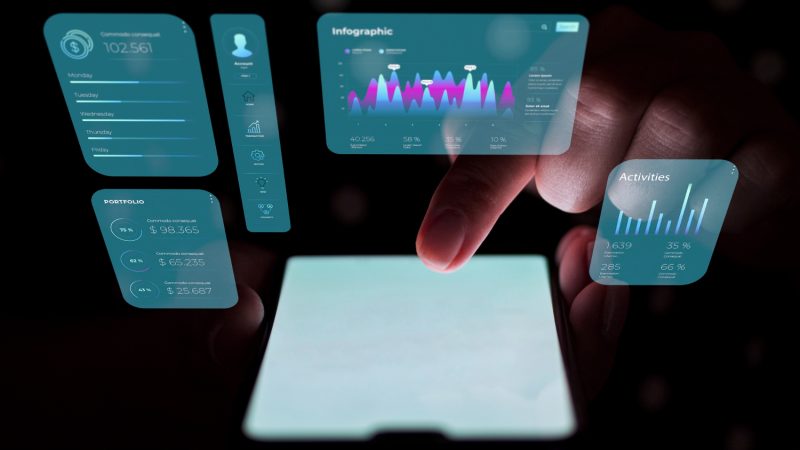Integrating Customer Feedback into Product Development

In today’s customer-centric business environment, integrating customer feedback into product development is not just a best practice; it’s a necessity. For businesses across various industries, from tech and software to retail and healthcare, leveraging customer insights can significantly enhance product relevance, quality, and market fit. This approach directly addresses common pain points such as inefficient customer relationship management (CRM), the need for scaling product offerings, and complexities in managing customer support and service.
The Importance of Customer Feedback
Customer feedback is an invaluable resource for businesses. It provides direct insights into what customers like, dislike, and desire in a product. By actively listening to customers, companies can align their product development efforts with actual market needs, reducing the risk of product failure. This customer-driven approach not only improves product quality but also strengthens customer relationships, as customers feel valued and heard.
Methods of Collecting Customer Feedback
There are various methods for collecting customer feedback, each offering unique insights. Surveys and questionnaires are common tools that can be used to gather quantitative data. Focus groups and interviews, on the other hand, provide qualitative insights, offering deeper understanding of customer opinions and attitudes. Social media and online reviews are also rich sources of spontaneous and candid feedback. Integrating these different methods ensures a comprehensive understanding of customer needs and preferences.
Incorporating Feedback into the Product Development Cycle
Integrating customer feedback into the product development cycle involves more than just collecting data; it requires a structured approach to analyze and implement this feedback. This process starts with defining clear objectives for feedback collection, ensuring that the information gathered is relevant to the development goals. Once collected, the feedback should be analyzed to identify common themes and actionable insights. These insights then need to be incorporated into the product design and development process, influencing decisions related to features, design, usability, and functionality.
Utilizing Net Promoter Score (NPS)
A subtle yet effective tool in gauging customer satisfaction and loyalty is the Net Promoter Score (NPS). This metric measures the likelihood of customers recommending a product or service to others. NPS can provide valuable insights into the overall customer perception of a product, which can be a crucial indicator of its market success. By integrating NPS feedback into product development, businesses can identify areas that need improvement and those that are driving customer satisfaction.
Balancing Customer Desires with Business Objectives
While customer feedback is essential, it’s important to balance these insights with overall business objectives and market trends. Not all customer feedback will be relevant or feasible to implement. Businesses must evaluate feedback against their strategic goals, technical feasibility, and market viability. This balancing act ensures that the product development remains focused and aligned with the business’s long-term vision.
Creating Feedback Loops
Establishing feedback loops is a critical component of integrating customer feedback into product development. Feedback loops involve not just collecting and analyzing feedback but also communicating back to customers how their input has influenced the product. This ongoing dialogue fosters a sense of partnership and trust between the business and its customers. In industries like tech/software or retail, where products are constantly evolving, these feedback loops can be instrumental in maintaining customer engagement and loyalty.
Leveraging Technology for Feedback Management
Technology plays a pivotal role in managing and integrating customer feedback. Advanced CRM systems and feedback management tools can help in efficiently collecting, analyzing, and tracking feedback. These systems can also integrate feedback data with other customer data, providing a holistic view of customer preferences and behaviors. For businesses struggling with inefficient CRM systems or limited data insights, leveraging technology in feedback management can be a game-changer.
Training and Empowerment of Teams
Integrating customer feedback into product development requires a cultural shift within the organization. Teams across the company, from product development to marketing and customer service, need to be trained and empowered to value and use customer feedback. This involves creating processes and incentives that encourage customer-centric thinking and actions. In sectors like healthcare or financial services, where products have significant impacts on customers’ lives, fostering a customer-focused culture is especially important.
Prioritizing Actionable Feedback
In the sea of customer feedback, prioritizing actionable items is crucial. Not all feedback will be equally useful or relevant. Businesses must develop criteria to identify which feedback can have the most significant impact on product development. This might include focusing on feedback that repeatedly comes from multiple sources or feedback that points to usability issues. Prioritization ensures that resources are allocated effectively and that the most impactful changes are made first. This approach is particularly beneficial in industries like automotive or energy, where product development involves significant investment and complex engineering.
Encouraging Proactive Feedback Collection
Proactive feedback collection is another essential aspect of integrating customer insights into product development. Instead of waiting for feedback to come in organically, businesses should actively seek it out at various stages of the product lifecycle. This can be achieved through beta testing, customer surveys pre- and post-launch, and engaging with customers directly through social media or customer forums. Proactive feedback collection not only provides early insights into potential issues but also helps in gauging customer expectations and satisfaction levels in real-time.
Analyzing Feedback for Continuous Improvement
Finally, the integration of customer feedback into product development should be viewed as an ongoing process rather than a one-time event. Continuous analysis of feedback, even post-product launch, is vital for ongoing product improvement and innovation. This continuous improvement cycle helps businesses stay ahead of market trends and customer expectations. In sectors like tech/software and telecommunications, where the market evolves rapidly, this approach ensures that products remain relevant and competitive over time.
Conclusion
Integrating customer feedback into product development is a strategic approach that can lead to more successful and customer-centric products. By effectively collecting, analyzing, and implementing customer insights, businesses can enhance product relevance, quality, and customer satisfaction. This approach not only addresses key business pain points but also fosters a culture of continuous improvement and customer engagement. In the competitive business landscape, where customer needs and preferences are constantly evolving, integrating customer feedback into product development is essential for staying relevant and achieving long-term success.






